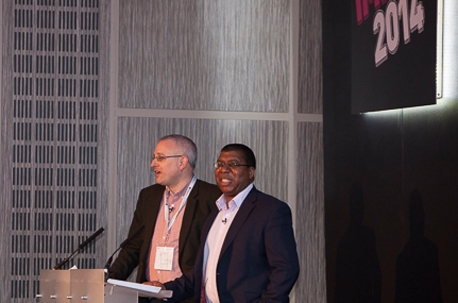NEWS18 March 2014
All MRS websites use cookies to help us improve our services. Any data collected is anonymised. If you continue using this site without accepting cookies you may experience some performance issues. Read about our cookies here.
NEWS18 March 2014
Three clients share their stories of triggering commercial success at the MRS Conference.
Researching your customers is all very well and good, but how do you ensure the insights generated are transformed into commercial success? At the MRS Conference, journalist and editor Richard Young invited three clients to share case studies of delivering tangible results in a time of financial constraint.

First up were Toby Hartwell, managing director of The Folio Society and Janet Coates from Insight Connection, who described how they brought about a “revolutionary change”, at book publisher The Folio Society. This change, they said, came not just from the insight but from the way stakeholders across the business had engaged with that insight.
Coates explained how they ensured the entire team of 90 at The Folio Society were brought on board with the new direction: by getting stakeholders across the business involved in the research debrief, and then in a subsequent series of iterative meetings that shaped the business model.
“We decided that somebody needed to champion the cause, and I took that role,” explained Hartwell. “It was important to build awareness and support; we started with the Chairman all the way through. Even the lady on reception knew about it. Eventually people started telling me about the new direction.”

Next up were Clare Gough of Waitrose, who, alongside Debbie Newbould of One MS and Carol Garbutt of Oxford SM, described how they “found a way for the people across the business to live the manifesto” by using insight in a more engaging way.
“It was vital that more Waitrose stakeholders moved from ‘passively knowing’ to ‘experiencing’ insight,” explained Gough. The team put together a series of events, each one sponsored by a member of the leadership team who put forward a business challenge that needed to be answered.
The process began with exploring the existing insight within the business “in order to truly understand what we knew about the issue,” said Gough, “and to frame the question they wanted answered.” Each member of the team then went out with a customer – for example accompanying them on a shop or talking to them in their home. They then came back together and shared their insights.
The team explained how this gave them a fresh perspective on customer behaviour, beyond the big data generated from other sources such as its loyalty scheme. “Behaviour can tell you what happens, but it can’t tell you why,” Gough added.

The last case study focused on a little-known (at least in the UK) telephony brand – Vonage, and its challenge of growing awareness and use versus its key competitors, Skype and BT.
Vonage marketing director Roger Vigilance and ICM research director Maurice Fyles described how their customer research challenged their long-held assumptions about which customers were driving the business.
“Our internal data had told us who was behaving how, but it didn’t tell us why. And it couldn’t tell us about who wasn’t playing with us,” said Vigilance. “We needed to get some ‘outside-in’ information.”
The team decided that investing in research was the best way of increasing their odds of success. Each key insight generated led to a distinct marketing message, ensuring that the direction moved away from just offering price plans and towards offering solutions to problems. “Research was bringing in brand new information, not just firming up existing knowledge,” said Vigilance.
Vonage also believe in the importance of getting everyone involved in understanding and disseminating the insight. “Research for use is a board-level conversation,” explained Vigilance. “All stakeholders are involved – we take it very seriously.”
0 Comments